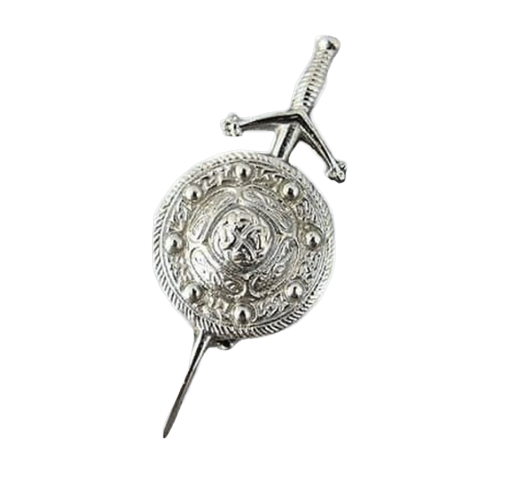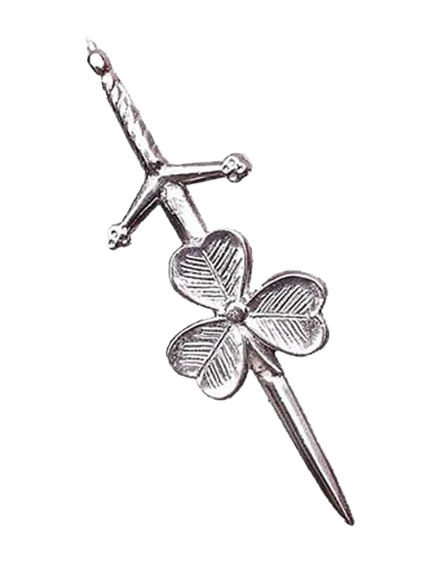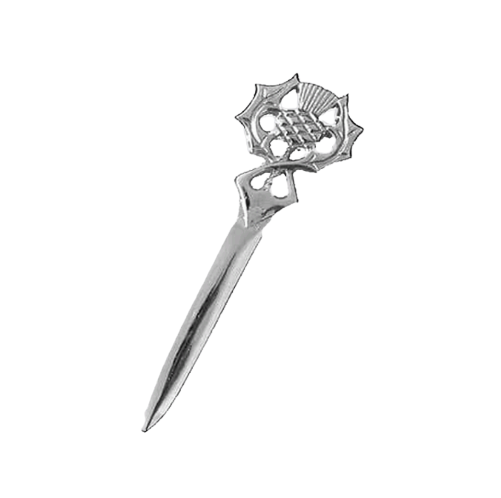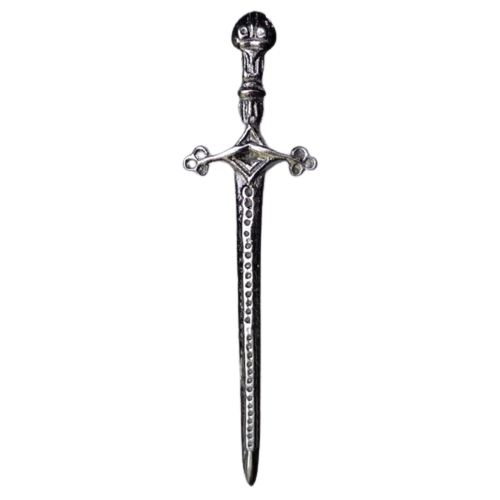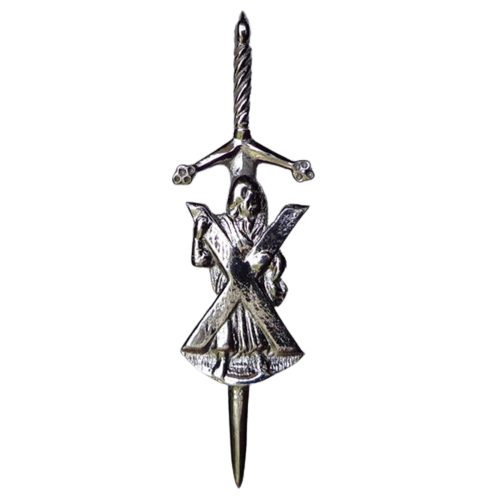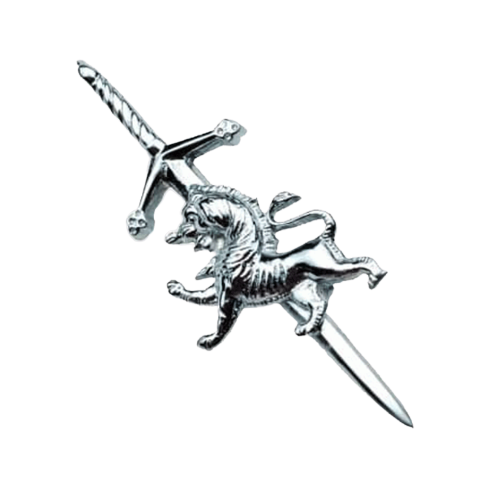-
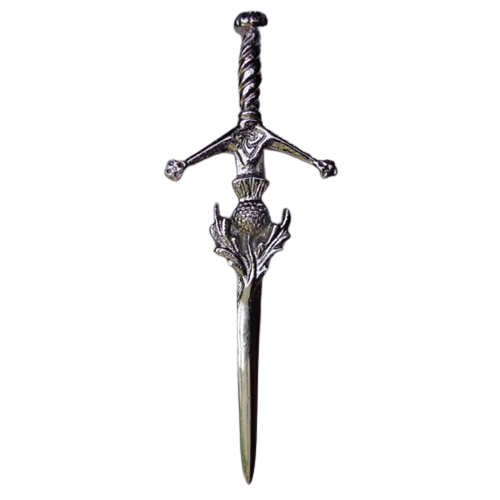 Sale
SaleThistle Kilt Pin
Regular price $28.00 CADRegular priceUnit price / per$55.00 CADSale price $28.00 CADSale -
Sword Kilt Pin with Celtic Shield Design
Regular price $28.00 CADRegular priceUnit price / per$55.00 CADSale price $28.00 CADSale -
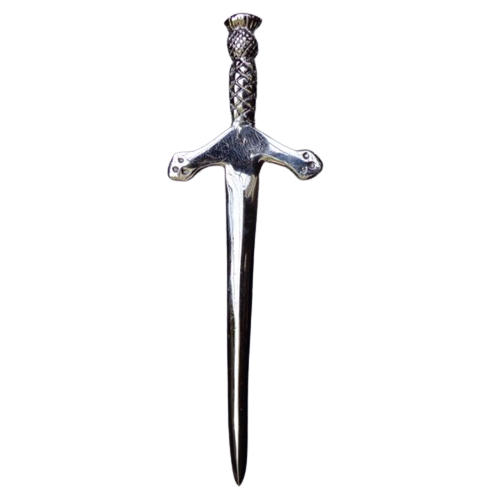 Sale
SaleSword Kilt Pin
Regular price $28.00 CADRegular priceUnit price / per$55.00 CADSale price $28.00 CADSale -
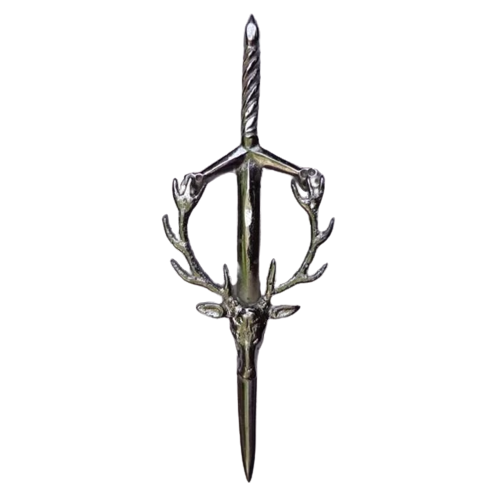 Sale
SaleStag Head Kilt Pin
Regular price $28.00 CADRegular priceUnit price / per$55.00 CADSale price $28.00 CADSale -
Shamrock Scottish Kilt Pin
Regular price $28.00 CADRegular priceUnit price / per$55.00 CADSale price $28.00 CADSale -
Scottish Thistle Kilt Pin with Chrome Finish
Regular price $28.00 CADRegular priceUnit price / per$55.00 CADSale price $28.00 CADSale -
Scottish Sword Kilt Pin
Regular price $28.00 CADRegular priceUnit price / per$55.00 CADSale price $28.00 CADSale -
Saint Andrew Kilt Pin
Regular price $28.00 CADRegular priceUnit price / per$55.00 CADSale price $28.00 CADSale -
New Deluxe Claymore Sword Thistle Head Kilt Pin
Regular price $28.00 CADRegular priceUnit price / per$55.00 CADSale price $28.00 CADSale -
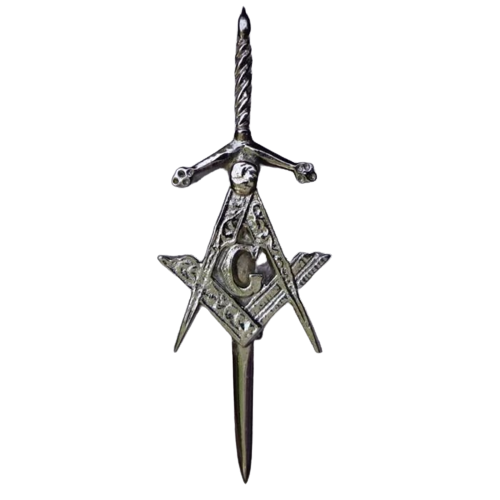 Sale
SaleMasonic Kilt Pin
Regular price $28.00 CADRegular priceUnit price / per$55.00 CADSale price $28.00 CADSale -
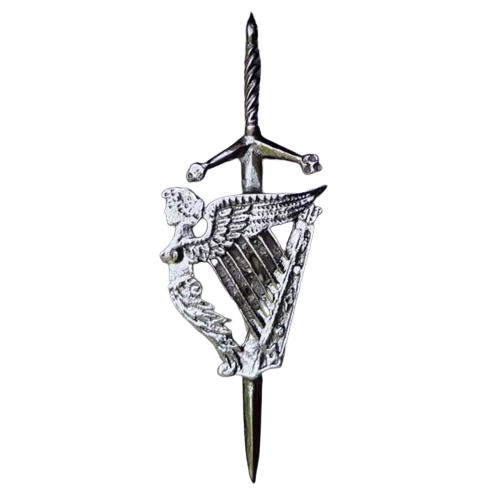 Sale
SaleLady Harp Kilt Pin
Regular price $28.00 CADRegular priceUnit price / per$55.00 CADSale price $28.00 CADSale -
Highland Scottish Rampant Lion Kilt Pin Chrome Finish
Regular price $28.00 CADRegular priceUnit price / per$55.00 CADSale price $28.00 CADSale -
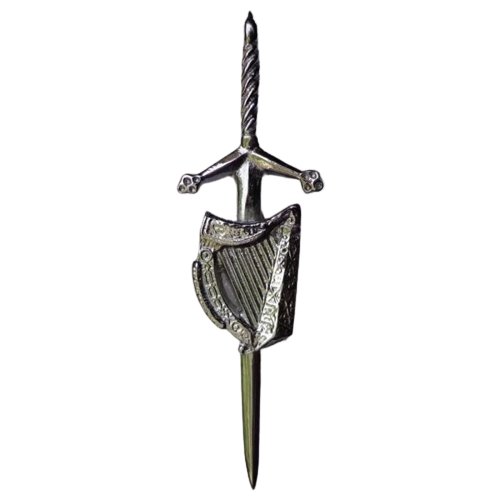 Sale
SaleHarp Kilt Pin
Regular price $28.00 CADRegular priceUnit price / per$55.00 CADSale price $28.00 CADSale
Collection: Kilt Pins
Kilt Pins: Adding Flair and Functionality to Traditional Highland Attire
Introduction: Kilt pins are distinctive accessories that serve as both practical fastenings and stylish embellishments for traditional Scottish Highland dress. These decorative pins are worn on the front apron of a kilt, adding a touch of elegance, symbolism, and personal flair to the ensemble. In this guide, we'll explore the origins, features, styling options, and cultural significance of kilt pins, celebrating their role as essential components of Highland attire.
Origins and Evolution: The tradition of wearing kilt pins dates back to the late 19th century when Highlanders began incorporating decorative pins into their attire as a way to secure the front apron of their kilts. Originally functional in nature, kilt pins gradually evolved into ornamental accessories, with designs ranging from simple and understated to intricate and embellished. Today, kilt pins are cherished for their aesthetic appeal and symbolic significance, serving as personal expressions of style, identity, and heritage.
Features of Kilt Pins:
-
Design Variety: Kilt pins come in a wide array of designs, shapes, and sizes to suit different tastes, preferences, and occasions. Common motifs include Celtic knots, thistles, St. Andrew's crosses, clan crests, animals, and traditional Scottish symbols, each imbued with its own cultural and personal significance.
-
Materials: Kilt pins are crafted from various materials, including sterling silver, pewter, brass, stainless steel, and embellished with gemstones, enamel, or other decorative elements. The choice of material often reflects the wearer's preferences for aesthetics, durability, and budget.
-
Practical Fastening: In addition to their decorative function, kilt pins serve a practical purpose by securing the front apron of the kilt, preventing it from flapping open in windy conditions or during movement. The pin is typically attached to the inner apron of the kilt and secured through the outer apron, ensuring a snug and secure fit.
-
Versatile Sizes: Kilt pins are available in various sizes to accommodate different styles of kilts and personal preferences. While larger pins make a bold statement and stand out as focal points of the ensemble, smaller pins offer a more subtle and understated accent.
Cultural Significance: Kilt pins hold cultural significance as symbols of Scottish heritage, tradition, and personal identity:
-
Clan Associations: Many kilt pins feature designs or motifs that are associated with specific Scottish clans, representing ancestral heritage, familial ties, and clan pride. By wearing a kilt pin adorned with their clan crest or tartan motif, individuals can honor their lineage and celebrate their Scottish roots.
-
Personal Expression: Kilt pins allow wearers to express their personal style, interests, and affiliations through decorative motifs and designs. Whether choosing a pin that reflects their clan heritage, showcases a favorite symbol or represents a special occasion, kilt pins serve as meaningful expressions of individuality and identity.
Styling Options for Kilt Pins:
-
Formal Occasions: Pair a statement kilt pin with traditional Highland attire for formal events such as weddings, ceilidhs, or ceremonial gatherings. Choose a pin that complements the colors and motifs of the kilt, adding a touch of elegance and sophistication to the ensemble.
-
Everyday Wear: Incorporate a more understated kilt pin into everyday outfits for a subtle yet stylish accent. Opt for a smaller pin with a simple design or motif that adds a touch of personality to casual kilts, jackets, or vests worn for everyday activities or social gatherings.
-
Special Occasions: Wear a kilt pin adorned with a meaningful symbol or design for special occasions such as birthdays, anniversaries, or Scottish festivals. Choose a pin that holds personal significance or commemorates a milestone event, serving as a cherished keepsake and reminder of the occasion.
Care and Maintenance:
-
Cleaning: To maintain the appearance of kilt pins, clean them regularly using a soft cloth or polishing cloth to remove dirt, tarnish, or fingerprints. Avoid using harsh chemicals or abrasive cleaners that may damage the finish or surface of the pin.
-
Storage: Store kilt pins in a dry, cool place away from direct sunlight and moisture to prevent tarnishing or discoloration. Consider storing them in a jewelry box, pouch, or soft fabric bag to protect them from scratches or damage.
-
Maintenance: Inspect kilt pins periodically for any signs of damage, wear, or loose components. Tighten the pin backings or clasps as needed to ensure a secure fit and prevent loss or damage during wear.
Conclusion: Kilt pins are cherished accessories that add flair, symbolism, and personalization to traditional Scottish Highland attire. With their diverse designs, materials, and cultural significance, kilt pins serve as meaningful expressions of clan pride, personal identity, and style for wearers around the world. Whether worn for formal occasions, everyday wear, or special celebrations, kilt pins are cherished symbols of Scottish heritage and tradition, enriching the beauty and authenticity of Highland dress with their timeless appeal and enduring significance.


